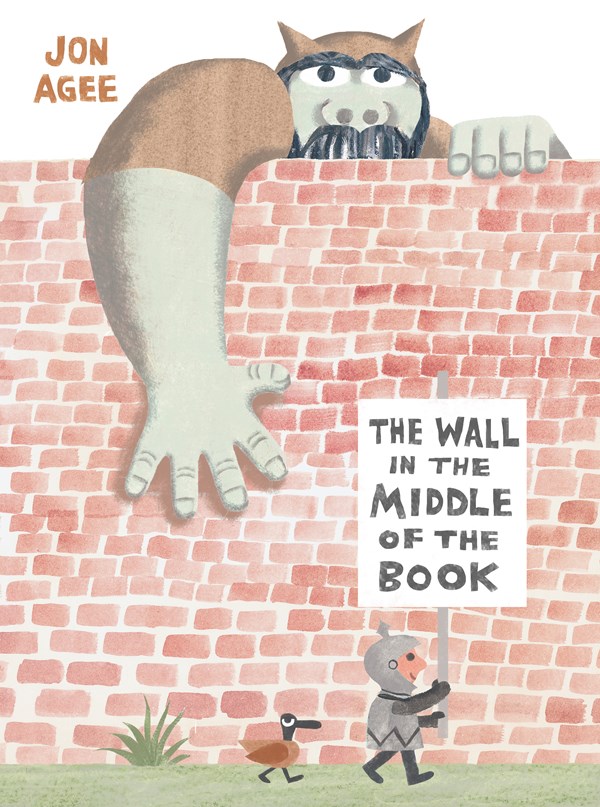 I was very excited for this week’s Paint-a-Story at the shop, both because I love Jon Agee’s There’s a Wall in the Middle of This Book, and because I could finally use some materials for our accompanying art project that I had stashed in the garage months ago — following a long, very satisfying rummage at our local hardware store, where the clearance shelves are a treasure trove of creative possibility for preschoolers and adults who like big messes. (OK, I was really there to look for a new garbage disposal… but how long can you do THAT?) As I have written about in Paint-a-Story Mondays; or, The Messier the Better, each Monday morning we gather with 25-35 preschool children and their grownups to read a picture book aloud and complete a “very messy” art project — sometimes experimenting with the materials or style of the book’s illustrator, and sometimes using found materials (and a lot of glitter and glue) to expand on the story and its theme. Our staff selects the book and provides the materials, but much of what is created by our guests is original, inspired, and worth oh-so-much-more than a refrigerator door gallery showing. Our objective is to be more concerned with process than product, believing that open-ended experimentation with materials within the shadow of good stories makes literature real and tangible to young people — truly, we believe this is true for readers of all ages.
I was very excited for this week’s Paint-a-Story at the shop, both because I love Jon Agee’s There’s a Wall in the Middle of This Book, and because I could finally use some materials for our accompanying art project that I had stashed in the garage months ago — following a long, very satisfying rummage at our local hardware store, where the clearance shelves are a treasure trove of creative possibility for preschoolers and adults who like big messes. (OK, I was really there to look for a new garbage disposal… but how long can you do THAT?) As I have written about in Paint-a-Story Mondays; or, The Messier the Better, each Monday morning we gather with 25-35 preschool children and their grownups to read a picture book aloud and complete a “very messy” art project — sometimes experimenting with the materials or style of the book’s illustrator, and sometimes using found materials (and a lot of glitter and glue) to expand on the story and its theme. Our staff selects the book and provides the materials, but much of what is created by our guests is original, inspired, and worth oh-so-much-more than a refrigerator door gallery showing. Our objective is to be more concerned with process than product, believing that open-ended experimentation with materials within the shadow of good stories makes literature real and tangible to young people — truly, we believe this is true for readers of all ages.
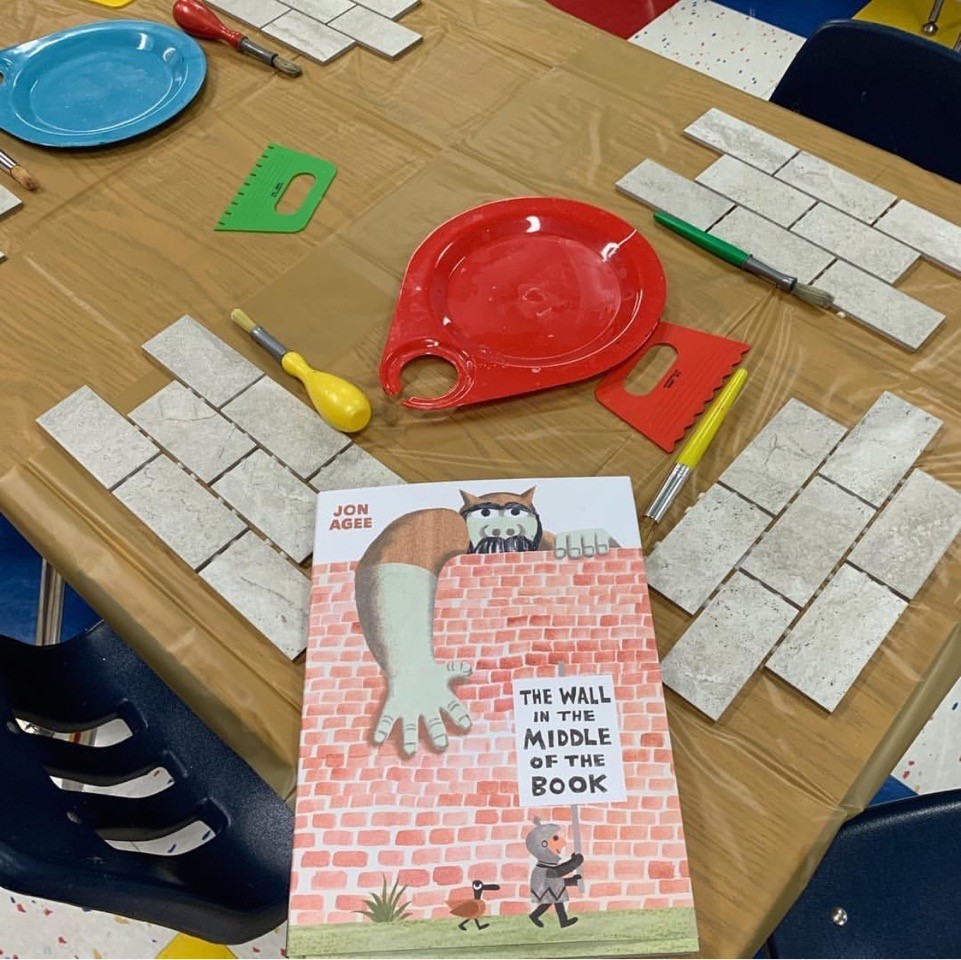 The topic of walls is much on our minds, and the weekend’s news stories were disheartening in their continued reminders of how divided and antagonistic our world can be. As I surveyed both my list of potential read-alouds and our available supplies (bless my tolerant husband and those shelves he installed in the back of the garage) the whole plan came together like bricks and mortar. A clearanced box of ceramic tiles, some acrylic paint, and a collection of plastic “scrapers” became the building blocks of a very interesting morning.
The topic of walls is much on our minds, and the weekend’s news stories were disheartening in their continued reminders of how divided and antagonistic our world can be. As I surveyed both my list of potential read-alouds and our available supplies (bless my tolerant husband and those shelves he installed in the back of the garage) the whole plan came together like bricks and mortar. A clearanced box of ceramic tiles, some acrylic paint, and a collection of plastic “scrapers” became the building blocks of a very interesting morning.
Jon’s book is actually (at least) two stories: the concerns of a knight on one side of a giant brick wall, celebrating his luck in being protected from the fierce wild animals and giant ogre who live on the other side, and an unexpected crisis in his own kingdom. As the story progresses, the knight is threatened by an impending flood on his “safe” side of the wall. As the water level rises, he desperately climbs a ladder leaning against the protective brick wall to keep from drowning. On the other side of the wall, the reader enjoys the wordless tale of the animals, climbing up in a pyramid to reach the top of the wall, but upset by a tiny mouse. Meanwhile, the knight continues to pronounce the “safety” of his side.
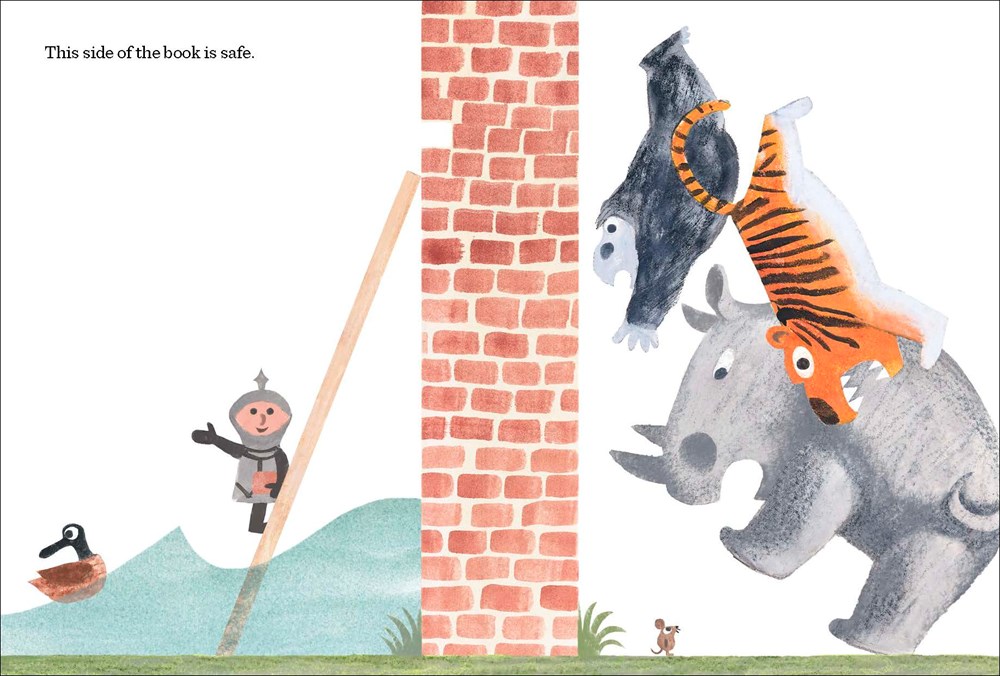
My young reading companions were very concerned by this page. “Look, Mrs. Cynthia! The animals! They are falling! He should climb up and help them!”
“Do you think that the knight might be afraid of what’s on the other side of the wall? Could he be scared of the tiger?”
“No!! It’s his job! They are animals and he should be taking care of them!”
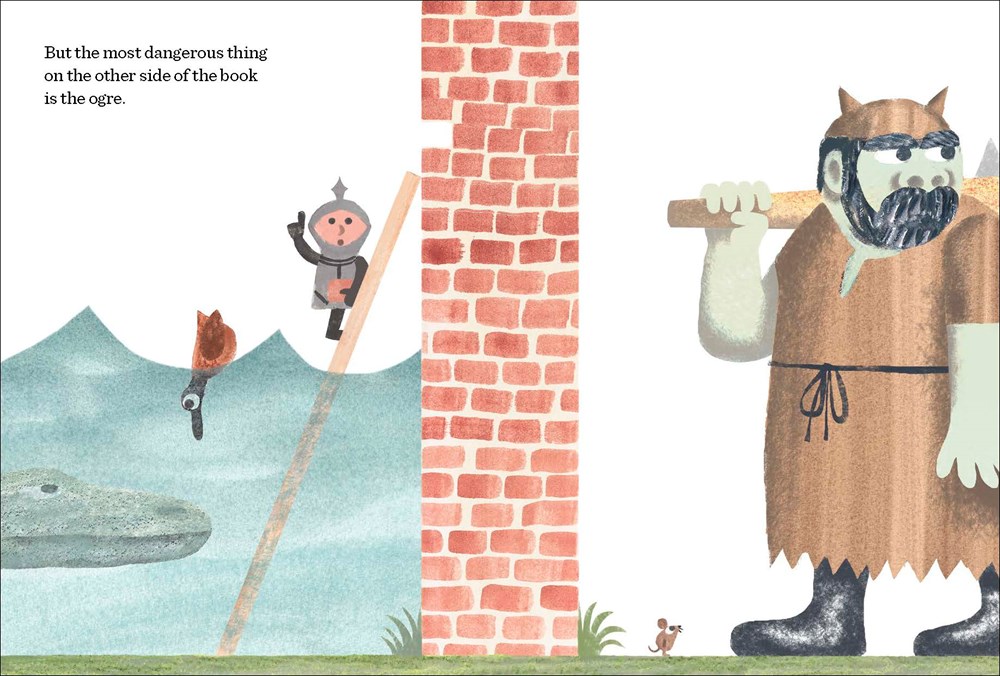
As the water level continues to rise, it’s clear that the knight is in some trouble. “Mrs Cynthia!! He should swim! Or climb over! There is nothing scary there. The other side is just a guy. He could play with the animals and the big giant. AND THERE’S A CREATURE COMING!”
At this point, my young friends’ attention turned entirely to the action under the water on the knight’s side. Oblivious to our poor hero’s distress about the potential dangers on the other side of the wall, they were indignant that he should “turn around and scoop up those little fishes and take them home!” As the ogre reaches over the brick barrier to rescue the knight and bring him over to safety, their focus stayed firmly on the welfare of the school of little fish, who unfortunately become lunch, and then in turn dinner for larger sea creatures.
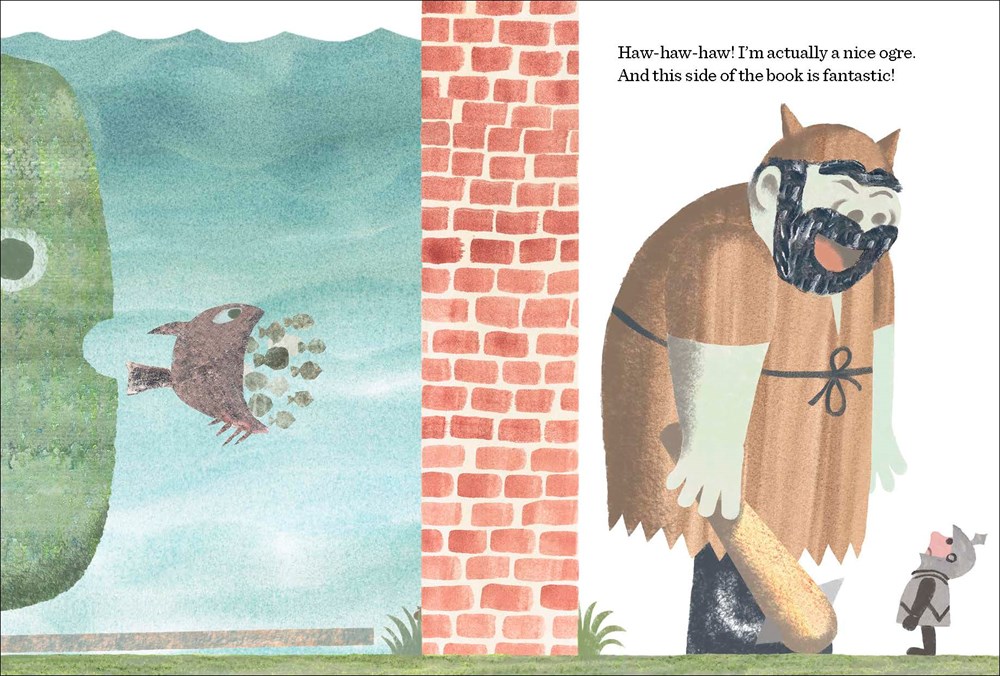
I asked the children if the knight should be scared, now that he was on the ogre’s side. “No, he should make friends with the giant, and they should save the fishes together.”
Our conversation about walls continued as we moved to the painting tables and donned our smocks. “Mrs Cynthia, I’m making my wall lots of colors. It’s not tall. We could climb on it. It would be fun and good.”
“Would you like to have a wall of your own to play on?”
“Yes. And we could climb on it together, and then you could come in my back yard and go on my swing set. And we could have lunch. I like hummus. Do you like it? My little sister doesn’t, so she can have macaroni. Then she will take a nap, and we can play. “
“Your wall sounds very nice, and I like to play. Do you think the knight and the ogre are playing together now? Could they be friends?”
“Sure. We can all be friends. But the fishes should stop eating each other. That‘s rude.”
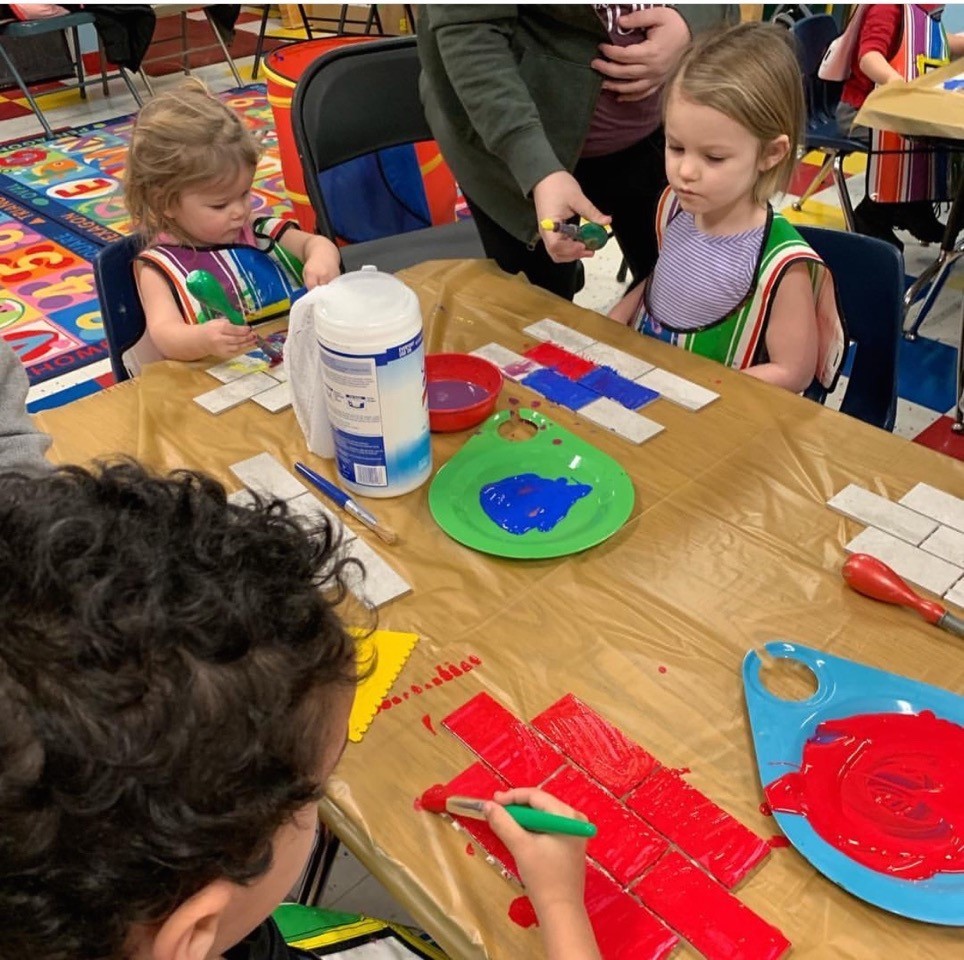
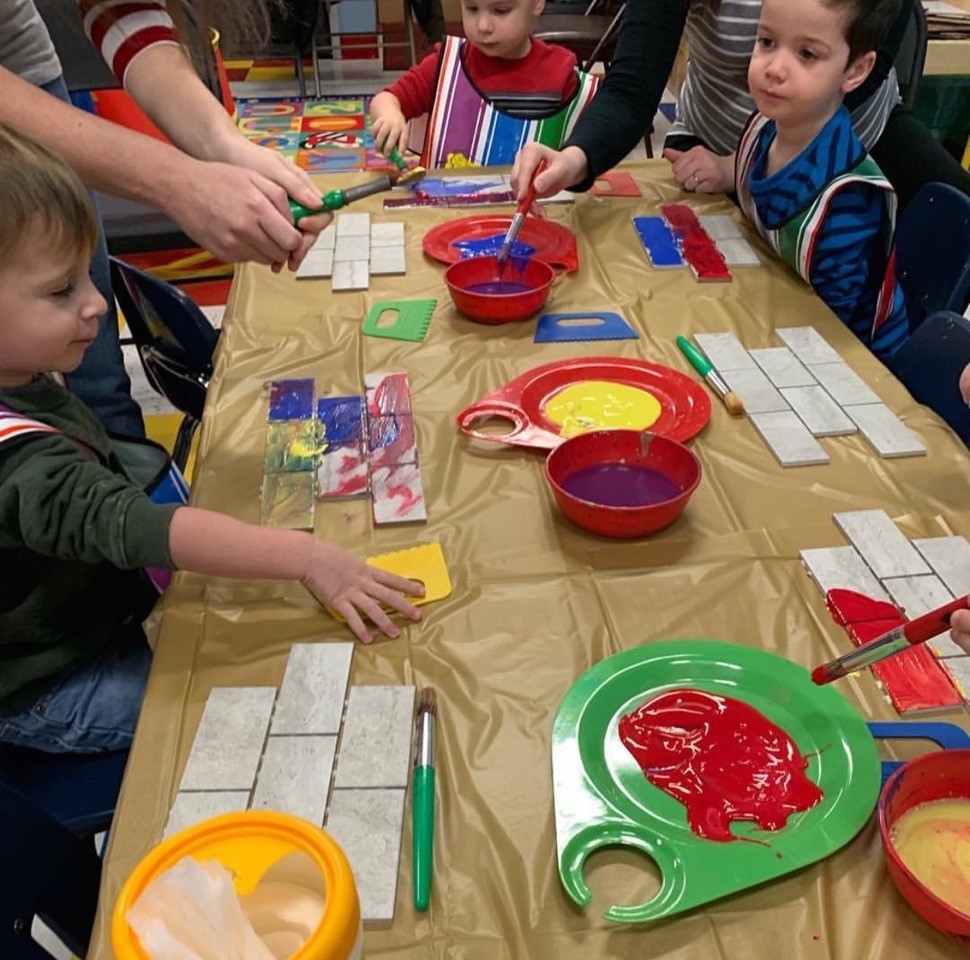

We need more of YOU, Mrs. Cynthia.
I LOVE this craft idea with this book – bravo!
“Out of the mouths of babes.”
Clearly, we need to listen to children more often. Their instincts are much better than those of many “grown-ups” these days.